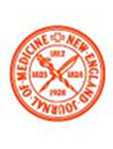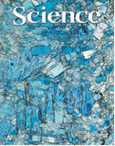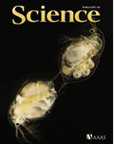Nature:研究发现与自闭症有关的三个基因突变
2012-04-10 Benjamin M. Neale 等 Nature
4月2号是第五届世界自闭症日,4月4日Nature杂志在线发表三篇作为特色文章的研究论文表明自闭症与多个基因突变有关。 三个新发现的基因突变与自闭症有关。这些研究成果揭开了自闭症的新的遗传靶标,为自闭症的重要的遗传变化及导致泛自闭障碍(autism spectrum disorders, ASD)的多个生物学途径提供了新的理解。 基因突变是发生在DNA链上的错误,使人具有患某种疾病的风险。在这

4月2号是第五届世界自闭症日,4月4日Nature杂志在线发表三篇作为特色文章的研究论文表明自闭症与多个基因突变有关。
三个新发现的基因突变与自闭症有关。这些研究成果揭开了自闭症的新的遗传靶标,为自闭症的重要的遗传变化及导致泛自闭障碍(autism spectrum disorders, ASD)的多个生物学途径提供了新的理解。
基因突变是发生在DNA链上的错误,使人具有患某种疾病的风险。在这几项研究中鉴定的发生突变的基因—CHD8, SNC2A, and KATNAL2—是通过被称为外显子测序的最新基因组测序技术而发现的。研究人员称,随着对这些基因的进一步定型研究以及对数千个家庭的基因测序,他们将能够为自闭症开发新的治疗方法及预防策略。
“williamhill asia 现在已经对与自闭症有关的大量基因有了很好的判断,并且已经发现了其中的10%,”西奈山医学院的Joseph Buxbaum博士说。“如果williamhill asia 要解开与ASD有关的重要基因,williamhill asia 需要对更多的患者记忆他们的小孩进行研究。这项工作对于促进自闭症的治疗非常关键。”
在研究中,ASD研究人员猜测,自身产生的突变是相当一部分自闭症发生的原因。自身产生的突变指的是那些受影响的小孩中首次出现的突变,是由精子或卵子中的突变发生而来的。
由Buxbaum博士发起的自闭症测序联合会是一个由自闭症遗传学研究者组成的国际团队,他们通过大规模下一代测序对自闭症的遗传学病因进行研究。在这项研究中,他们对超过500个家庭(包括父母与小孩)进行测序研究,检测了基因组上的蛋白质富集区域。
Buxbaum博士说:“当在许多受影响的小孩中发现相同的突变,而在非自闭症小孩中却没有时,williamhill asia 相信williamhill asia 发现了通过共同作用对大部分自闭症患者形成影响的突变。williamhill asia 的研究发现,由这些突变基因所编码的蛋白质之间的发应超过了williamhill asia 的预期,正是了超过williamhill asia 预期的重要相关性。”
同期作为特色文章发表在Nature上的另外两篇论文中的其中一篇由耶鲁医学院的Matthew State博士领导完成。他们首次发现数个高度断裂性突变与ASD相关。研究结果表明,在某个基因上的多个变异是形成了ASD的风险因子。另外一篇由华盛顿大学Evan Eichler博士领导完成的研究发现与ASD相关的某些特定突变是亲缘性的。他们的研究结论还支持了此前的研究成果:年龄相对更大的父亲其小孩患ASD的风险更高。(生物谷 bioon.com)

doi:10.1038/nature11011
PMC:
PMID:
Patterns and rates of exonic de novo mutations in autism spectrum disorders
Benjamin M. Neale, Yan Kou, Li Liu, Avi Ma’ayan, Kaitlin E. Samocha, Aniko Sabo, Chiao-Feng Lin, Christine Stevens, Li-San Wang, Vladimir Makarov, Paz Polak, Seungtai Yoon, Jared Maguire, Emily L. Crawford,0 Nicholas G. Campbell,0 Evan T. Geller, Otto Valladares, Chad Schafer, Han Liu, Tuo Zhao, Guiqing Cai, Jayon Lihm, Ruth Dannenfelser, Omar Jabado, Zuleyma Peralta
Autism spectrum disorders (ASD) are believed to have genetic and environmental origins, yet in only a modest fraction of individuals can specific causes be identified1, 2. To identify further genetic risk factors, here we assess the role of de novo mutations in ASD by sequencing the exomes of ASD cases and their parents (n = 175 trios). Fewer than half of the cases (46.3%) carry a missense or nonsense de novo variant, and the overall rate of mutation is only modestly higher than the expected rate. In contrast, the proteins encoded by genes that harboured de novo missense or nonsense mutations showed a higher degree of connectivity among themselves and to previous ASD genes3 as indexed by protein-protein interaction screens. The small increase in the rate of de novo events, when taken together with the protein interaction results, are consistent with an important but limited role for de novo point mutations in ASD, similar to that documented for de novo copy number variants. Genetic models incorporating these data indicate that most of the observed de novo events are unconnected to ASD; those that do confer risk are distributed across many genes and are incompletely penetrant (that is, not necessarily sufficient for disease). Our results support polygenic models in which spontaneous coding mutations in any of a large number of genes increases risk by 5- to 20-fold. Despite the challenge posed by such models, results from de novo events and a large parallel case–control study provide strong evidence in favour of CHD8 and KATNAL2 as genuine autism risk factors.
文献二:De novo mutations revealed by whole-exome sequencing are strongly associated with autism
文献三:Sporadic autism exomes reveal a highly interconnected protein network of de novo mutations
本网站所有内容来源注明为“williamhill asia 医学”或“MedSci原创”的文字、图片和音视频资料,版权均属于williamhill asia 医学所有。非经授权,任何媒体、网站或个人不得转载,授权转载时须注明来源为“williamhill asia 医学”。其它来源的文章系转载文章,或“williamhill asia 号”自媒体发布的文章,仅系出于传递更多信息之目的,本站仅负责审核内容合规,其内容不代表本站立场,本站不负责内容的准确性和版权。如果存在侵权、或不希望被转载的媒体或个人可与williamhill asia 联系,williamhill asia 将立即进行删除处理。
在此留言














谢谢分享
28
#Nat#
46
#研究发现#
51
#自闭#
54